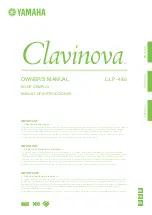
43
10.11 Hose inspection
Check the seam fastening the fitting to the hoses and check the condition of the hoses. If a hose shows signs
of leaks, breakages, swellings, abrasions, etc., it must be replaced.
Warnings concerning hose replacement:
1. Clean the area concerned to stop dirt getting in the hydraulic circuit.
2. The hose must be replaced by a maintenance engineer, who should use the necessary accident-
prevention equipment.
3. The new hose must have the same features and dimensions as the previous one.
WARNING:
the new hose must be built to withstand the pressure indicated on the “
CE
” plate.
For tightening torques, see table in chapter 17.
10.12 Drain line safety cap check
To prevent damage to the motor due to possible excess counterpressure in the drain line, a safety cap has
been fitted on the motor which allows excess pressure to be relieved. More specifically, when the drain line
pressure exceeds 1 bar, the cap deforms and allows oil out, thereby releasing the excess pressure.
IMPORTANT:
Clean the cap and the surrounding area well, making sure no dirt enters the system.
Proceed with the cap inspection (ref. “A” in fig. opposite).
Once the cap has swollen to allow oil out, it must be
replaced, together with the o-ring; after replacement, check
the pressure in the drain line, as this should now be below
1 bar (continuous and instantaneous rates).
The new cap fitted MUST have the same thickness as the
original one.
1
Summary of Contents for PL 4520
Page 14: ...14...
Page 60: ...60 IMPORTER...
















































